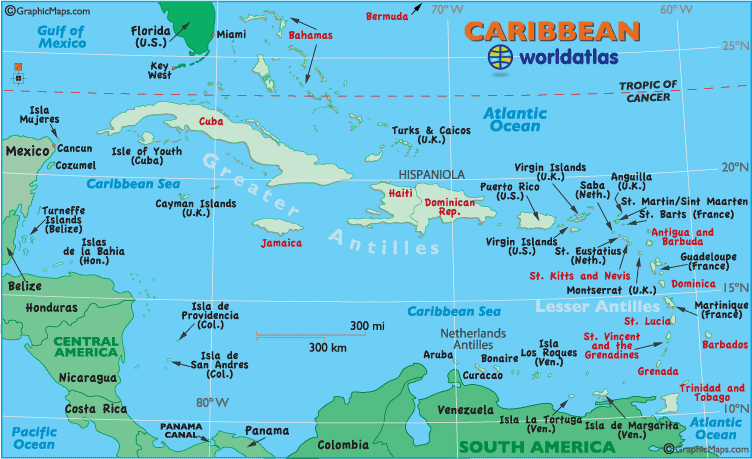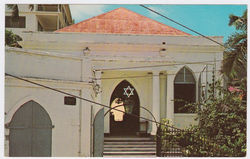americas
Sepharadim were the first Jews to arrive in the New World, looking for opportunities and religious freedom.
In 1633, the Dutch seized the coastal territory of Brazil and some Jews migrated to the New World but when the Portuguese re-conquered the territory, the Jews left, fearing a continued inquisition. A group of 23 Jews arrived by boat to Dutch New Amsterdam. Peter Stuyvesant, the Director-General, initially denied them refuge. However, many of the investors of the Dutch West India Company were Jewish, and their influence enabled the Sephardic Jews to stay, although they had to fight for rights to own land, trade with Indians, sell at retail, etc. After British capture of 'New York', religious rights were granted. Shearith Israel, which was founded in 1654 by Sephardic Jews, was the first Jewish congregation to be established in North America. A Jewish community in Newport Rhode Island began in 1658. Jews arrived in Latin America as members of colonizing expeditions from Spain, Portugal, Britain and the Netherlands. In most cases they were crypto-Jews and only in limited areas could they practice Judaism openly.
 Brazil.First American congregationAlthough Jews arrived with Portuguese explorers to Brazil, they could not safely practice Judaism openly. The Dutch captured Pernambuco in 1630, giving Jews their first religious freedom in the New World. They maintained a synagogue 'Tzur Yisrael', a Talmud Torah, & a cemetery. The community disintegrated in 1654 with the reconquest by Portuguese, sending Jews to the Caribbean & North America. In 2001, a museum was built on the synagogue's original site, and a commemorative stamp was issued. |  USA.New York synagogue extThe 23 Spanish-Portuguese Jews who arrived in New Amsterdam in 1654 established the first congregation, Shearith Israel. They didn't have their own synagogue building until 1730. Currently they occupy their 4th building, built in 1897 in the Neo-classical style. Israel included this building in a set of 5 synagogue stamps in 1970. |  USA.New York.synagogue.interiorThe Holy Ark of Shearith Israel portrayed on this postcard is also in the Neo-classical style. |
|---|---|---|
 USA.Newport RI.syn.extJews arrived in Newport Rhode Island by 1658. They named their synagogue Yeshuat Israel. Reverend Isaac Touro was the first spiritual leader. Later, when his son Abraham gave funds for restoring the building, it became known as 'Touro's Synagogue'. It is the oldest synagogue building in North America, completed in 1763. |  USA.Newport Rhode Island |  USA.Newport RI.syn.interiorThe interior, on a much reduced scale, is patterned after the great synagogue in Amsterdam, where R. Isaac Touro had studied. The distinctive hanging chandeliers give it that atmosphere. |
 USA.Newport.syn.rimonimThese silver Torah decorations adorn the Touro Synagogue's Torah scrolls. They are called Rimonim. They are favored by Sepharadim while Ashkenazim often use a one piece crown. They were made by colonial Jewish silversmith Meyer Myers who was president of the Silversmith Society in 1776. They are rare and valuable and were the subject of some controversy in 2016. |  USA.Newport.Syn.trap doorThis trap door on the Touro synagogue Bimah leads to an underground passage. According to legend, it was used to help runaway slaves in the underground railroad. It may also be a symbol of the perilous life in Spain during the Inquisition. |  America.USA.Newport.stampsThe Touro Synagogue was honored on stamps twice: by the United states in 1982, corresponding to the 250th anniversary of George Washington's birth, and by Israel in 1987 as part of a set featuring models of synagogues in the Beit Hatfuzot museum. |
 USA.Philadelphia.Colonial paperJews were active in Pennsylvania already in the late 1600's. Congregation Mikveh Israel was formally established in 1745 with the Spanish and Portuguese rite. This newspaper was published in 1784. Ads for Jewish merchants appear on its pages. |  USA.Colonial newspaper adsLeon Moses, Benjamin Nones and Moses Cohen (all Sephardic names) each took ads in this newspaper. They are brokers. Due to their connections with fellow Jews, they offer to do business in the US, Europe, and the West Indies. |  USA.Colonial paper money signed LevyAmerican colonial paper money was issued in several colonies. Each piece was hand-signed to discourage counterfeiting. The signers were prominent colonial leaders. This piece, from Philadelphia, is signed by Benjamin Levy. He was a Jewish patriot who took an active role leading towards American independence. The note is dated November 1776. |
 USA.Confederate paper money.BenjaminWhen southern states ceded from the Union and formed the Confederate States of America, the American Civil War began. Both sides had Jewish supporters. This is a Confederate banknote, dated 1862. It features a portrait of Judah P. Benjamin, who served as the Secretary of Sate for the Confederacy. Benjamin was born to Sephardic parents who came to the Americas from London. |  USA.New York City.Emma LazarusEmma Lazarus, 1849-1887, was an American poet, born in New York City. She was an advocate for Jewish refugees who were fleeing the Russian pogroms. Lazarus was descended on her mother's side from a colonial Sephardic family whose origins were in Portugal. |  USA.NYC.medal. immigrantsLazarus' most famous work was a sonnet (14 line poem) entitled 'The New Colossus', referring to the statue of liberty that was just being built in New York harbor. The most famous lines from it include "...Give me your tired, your poor, your huddled masses yearning to breathe free...I lift my lamp beside the golden door." |
 USA.NYC.statue liberty medalHer words are engraved on a plaque attached to the base of the statue. |  Americas.CaribbeanJews fleeing from the long arm of the Inquisition, as it reached into the New World, found refuge in the Caribbean Islands. As early as the 1600's, they came to British- and Dutch- held territories. |  Americas.Caribbean.SurinamThe Dutch & British, among them Portuguese Jews, came as early as 1634. Suriname is on the northeast coast of South America but culturally identifies with the Caribbean. It was formerly known as Dutch Guiana. Jews settled in a savanna area and developed lucrative sugar cane plantations. Their first synagogue was built in 1685 but was abandoned when Jews moved to the cities. This set of stamps shows the synagogue, a map of the area and a tombstone. Their community was known as 'Jews Town. |
 Americas.Surinam.ParamariboThis Neve Shalom synagogue was built in 1719 by Sepharadim and then taken over by incoming Ashkenazim. It is one of Suriname's outstanding buildings. It is built entirely of wood, with a sand-covered floor. The sand alluded to the ancient Jews crossing the Sinai desert. |  Americas.Curacao.exteriorCuracao is a south Caribbean island off the coast of Venezuela. Jews arrived here by 1651. They were Portuguese Jews under Dutch auspices. They settled in Willemstadt, where this synagogue, Mikveh Israel, stands. It was the 4th to be built on the site, in 1732, and is the oldest in continuous use in the western Hemisphere. The community prospered and made substantial contributions to the synagogues in the N. American colonies. |  Americas.Curacao.syn interiorThe interior exhibits features that were found in most of the Caribbean synagogues: Candle chandeliers, sand on the floor, Tevah (reading platform) in the center of the room, synagogue leader' seats on the north wall. The mahogany ark stands 17 feet high, holds 18 scrolls and antique Torah ornaments. |
 Americas.Curacao.syn.EmanuelIn the 1860's a group broke away from Mikveh Israel and started a new congregation 'Emanu El'. This is their building, built in 1866. They are Sepharadim who identify with the Reform movement. The 2 congregations re-united in the 1960's as a Reform congregation and this building was sold. |  Americas.Curacao.merchant tokenJJNJewish merchants dominated trade in this area in the 17-1800s. Some issued tokens for local use. This one was issued by Jacob Jeoshua Naar, who put his initials on it. Someone of the same name is reported as minister of the Temple Emanu-El synagogue at this time. |  Americas.Curacao.merchant JJN backThe tokens are denominated in 'stuivers' which is a Dutch denomination, reflecting the influence of the Netherlands in this area. The tokens were reportedly demonetized in 1885. They are the size of a dime. |
 Americas.Barbados.synagogue stampsJews from Brazil arrived in Barbados as early as 1654. They were mainly merchants. They built this synagogue 'Nidhe Yisrael' and rebuilt it in 1831. Due to intermarriage and emigration, this Sephardic community dwindled before WWII. Newer arrivals are Ashkenazim. They restored the synagogue in 1987 and added a museum in 2007. Stamps issued on these 2 occasions show the interior and exterior of the building. Inside are typical Sephardic features of Caribbean synagogues. |  Barbados.Tolanto.Merchant tokenA half-penny token from Barbados from the mid eighteen hundreds. The Synagogue of Bridgetown recorded the burial on May 30, 1852 of a Moses Tolano. He was the 38 year old son of Joseph Tolano. It is assumed that he was the merchant who issued these small change advertising tokens (even though there is an extra T in the name). The image is of a bale of goods, probably tobacco or cotton. |  Barbados.Tolanto.token reverseSephardic Jews were prominent in the industries, especially sugar cane. The plantations were worked by slaves. In 1833, slavery was abolished throughout the British empire and this token was probably issued right after that, reflecting the change. A cask of liquid goods is shown. Moses initials 'MT' appear on both images. |
 Americas.Aruba.Beth Israel PCOld gravestones on Aruba show Jewish names going back to the 1500's. There hadn't been an organized community until the 20th century. It uses this synagogue named 'Beth Shalom'. The community is a mixture of immigrants, Sephardic and Ashkenazic, and follows Conservative customs. |  Americas.Panama City.synIn the mid-19th century Sephardic Jews from the Caribbean and Ashkenazic Jews from Europe settled in Panama City. The first community was founded in 1876, not building their own synagogue until 1935. The service gradually changed form Spanish Portuguese Orthodox in Hebrew to Reform in English preserving old Sephardic melodies. Stamp issued in 1962. |  Sepharad.America.Panama.synThe stamp shown here, from 1983, pictures the same building as the previous 1962 stamp. The congregation was named Kol Shearith Israel (KSI). However, the image printed on the envelope is of a newer synagogue called Shevet Achim. Their 700 Sephardic Middle Eastern families follow the Orthodox ritual. |
 St. Thomas synagogue exteriorThe Virgin Islands are in the Caribbean, near Puerto Rico. Spanish & Portuguese Jews had established a congregation there in 1796. The current building was built in 1833 after a fire destroyed the original. That still makes it the second oldest synagogue building on U.S. soil, after the Touro synagogue in Newport. |  St. Thomas.synagogue.interiorThe name of the congregation is Bracha VeShaom Ugemilut Chasadim. The layout is classic Sephardic and the floor is sand, like all the Caribbean synagogues. The furnishings are all original. |  Cuba.Havana.synagogue & community houseMarrano Jews were among the original colonists in Cuba, but assimilated. More recently, Jews from the Ottoman empire and from Eastern Europe arrived. Most left with the rise of Fidel Castro but some have returned. This image is of the Jewish community house in Havana, including the Great Synagogue. |